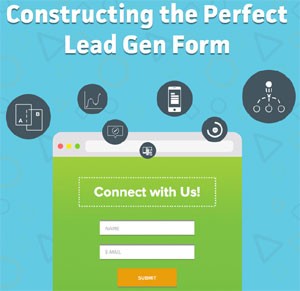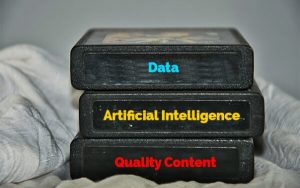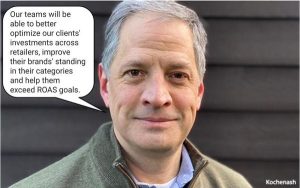
Another Auld Lang Syne
Yes, it’s time to close the book on another year, reflect on lessons learned and look ahead to the next chapter in our journey — an exciting new start filled with fresh challenges and opportunities. Naturally, many in the staffing industry will be offering recaps of the HR and employment issues that 2015 brought. We’ll all be reading about changing labor regulations, skills shortages, the gig economy, health care impacts and the tough slog of recruiting in a candidate’s market.
Rather than rehashing a lot of these wider labor topics, we’d like to revisit some of the trends and developments that captured our attention in 2015, from our perspective as a game-changing contingent talent firm supporting world-class MSP programs. Although Dick Clark may no longer be here to usher in the New Year from the bustle of Times Square, that ball’s still going to drop. So here’s our top five countdown of topics we covered and contemplated throughout 2015.
Five: The Big Emphasis on Big Data
Call the 21st century what you will — the connected age, the digital age, the information age — one inescapable reality is that it’s the data age. Nearly all aspects of our private, social and business lives are tied to data and the value we extract from this information. Vast, complex sets of data and the evolving science of predictive analytics allow us to find new correlations to spot business trends, prevent diseases, combat crime and even hire people. At the core of big data is a push to arrive at more confident and accurate decisions.
Algorithms in candidate ranking systems can figure out how quickly talent have progressed in their careers and determine whether an individual is a laggard or a mover who outpaces others. However, numbers alone can’t always paint an accurate picture or reliably predict future needs and their ideal solutions. To truly harness the benefits of big data, without big headaches, we learned to focus on humanizing the analytics and decisions this information empowers us to deliver.
Four: A More Diverse Perspective of Diversity
Creating a thriving employment culture persists as a topic at the forefront of employment issues, and this year it became even more pronounced. Part of the reason is diversity. To instill diverse values, a company must understand all the definitions that come into play when assessing the composition of a multicultural workforce. Diversity reaches far beyond race and gender, although those issues remain. In a fully human employment culture, diversity must also include other categories, such as workers in need of accommodations, mature professionals, veterans and transgender talent.
- Despite historic highs in terms of career progression and leadership opportunities, women are still subjected to significant pay gaps and prejudices. Full-time working women, despite their greater likelihood of completing a university education, continue to earn 18 percent less than men.
- Workers with disabilities are valuable yet underappreciated talent who also find themselves the victims of stereotypes and discrimination. This issue became more pronounced and apparent in 2015.
- One of the hottest topics surrounding diversity was gender identity. Issues of gender-based discrimination aren’t new, yet they took newer turns. The transgender community, in the view of too many people, remained on the periphery. This year, MSPs and their staffing partners strongly committed to following the best practices laid out by longstanding LGBT advocacy groups. They helped their clients abandon fears of differences and start preoccupying themselves with mutual wins.
- Mercer’s Age-Friendly Employer report found that inclusion policies tended to stop short of older workers in 2015. Fortunately, MSPs and their staffing partners worked hard to help clients overcome these challenges to build the most robust workforces imaginable.
The more we focus on differences, the more we consume ourselves with those differences — not the 99-percent of our being that connects us all as humans. And the staffing industry led the charge to create fully human workplaces in 2015.
Three: Socialization, Engagement, Culture — Enticing Top Talent in a Candidate’s Market
Unfilled job openings plagued employers in 2015 — complicated by a scarcity of needed skills — and candidates commanded more power in choosing their employers. The talent acquisition professionals who thrived in this seller’s market made bold changes in the ways they connected with buyers and sellers. They focused on placing the right candidates in the right business cultures rather than scouting for talent who presented the best deal.
Three of the biggest topics discussed by employment industry experts were the importance of social media, employment branding and superior content. They were not only realities in 2015, they positioned themselves as imperatives in the talent acquisition process. Consider the power of social media on culture and brand. Today’s workers are living employment brands. They are the face of every employer they serve, as well as the authors of the content. What they post on social networks about their experiences does more to influence talent marketing, branding and hiring than a company’s narrative. For contingent workers, the issue becomes more pronounced. The stories they relate, inspirational or critical, don’t affect just one organization — they shape the perceptions that potential candidates will have about multiple staffing agencies, MSPs and client organizations.
With the 2015 launch of Memo, an app that allows workers to post anonymous comments about their employers to a specific group page, staffing professionals committed to a more active role in curating the communications and marketing processes.
Two: Connecting with Generation Connected
Because talent today have such an affinity for online interactions and digital socialization, Google dubbed them Generation Connected, or Gen C. It also added a fascinating wrinkle to its explanation: “Gen C is a powerful new force in consumer culture. It’s a term we use to describe people who care deeply about creation, curation, connection, and community. It’s not an age group; it’s an attitude and mindset defined by key characteristics.”
The most interesting distinction about Gen C is that it can, and does, encompass professionals across generations — from young men and women just starting their careers to mentally and physically vibrant 65-year-olds. All of these people now lead online lives. They rely on mobile, on-demand technology to accomplish their work, both on the job and at home. These groups are increasingly turning to non-traditional employment arrangements to satisfy their work-life goals. The MSPs and staffing curators who enjoyed a successful 2015 themselves embraced some pretty non-traditional means to connect with this connected talent force.
This year saw pioneering advances in social, digital ecosystems that transcended the ways talent integrated with their peers, employers, recruiters and the world in general. Match-making apps such as eHarmony and Tinder inspired job seeking technologies like Switch, Jobr, Blonk, Weave and even eHarmony itself. Education also digitized as Massive Open Online Courses (MOOCs) transformed academia, gaining new levels of respect and credibility. In fact, MOOCs positioned themselves to become the next frontier in sourcing, engaging and hiring talent with brand-name certifications and degrees.
One: The Expanding Role and Importance of MSPs
If there’s one trait MSPs share in common, it’s how uncommon their solutions must be for each client. Successful programs forgo a one-size-fits-all approach — they are tailored to satisfy the unique needs of different enterprises. More than that, they’re built to change. MSPs aren’t just outsourced intermediaries that shoulder the burden of managing staffing suppliers. At their core, MSPs are highly experienced, skilled and certified workforce consultants who transform organizational talent initiatives as business process outsourcers. The longevity of an MSP is often dependent on how it continuously improves and introduces new avenues for growth and progress. If there’s a predominant theme that infused 2015 — and which experts predict will shape 2016 — it’s the ongoing evolution and relevance of MSPs in this new economy.
The world of contingent labor continued to expand in 2015. And with that growth, it became increasingly more complex. New models arose to mitigate the exposure of co-employment risks. New compliance standards were imposed for employment classification, talent management and reporting structures. New regulations were introduced. For clients caught in the turbulence of these dynamics over the past year, those who turned to MSPs saw tremendous benefits. MSPs absolutely redefined and refined existing structures to create more efficient standards that spoke to innovation, people networks, teams of teams, fluid structures and, most importantly, collaboration. LinkedIn research pegs relationship development as the number one priority for 2016. And that was the hallmark of MSPs this entire year.
Those MSPs dedicated to building mutually rewarding partnerships with suppliers and hiring managers inevitably found themselves basking in praise for superior levels of customer satisfaction, cost savings, quality and service. Whether undertaking a new implementation, transitioning into a program where the incumbent has left, unveiling a new solution or enhancing existing operations, MSPs constantly delivered value through collaborative relationships that allowed them to tackle functions hiring managers didn’t have the time, resources or dedicated experience to handle.
The workforce of 2015 also became more nuanced, seeing new classifications of contingent talent. Hiring managers and HR leaders struggled to effectively oversee all the different types of complementary workers in their blended teams while maintaining compliance, productivity and profitability. We learned this year that we can no longer cling to the idea of a “traditional” employment landscape. It simply won’t exist much longer. And with these shifts and complexities, managing the blended workforce required new approaches — and MSPs rose to the challenge. Here are a few MSP highlights from 2015.
MSPs proved instrumental in helping clients overcome the hurdles of unfamiliar staffing processes and technologies. And in 2016, MSPs will continue to evolve into a powerful, critical resource for clients: true business process outsourcers responsible for overseeing the entire employment population.
Business & Finance Articles on Business 2 Community(51)






